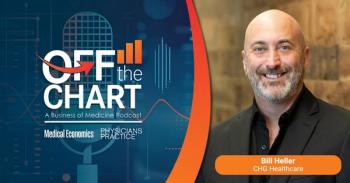
Physician burnout: When healers are hurting
More than half of all family physicians report some level of burnout, and only a third say they are happy in their work.
More than half of all family physicians report some level of burnout, and only a third say they are happy in their work. How did we get here?
Physicians vow to do no harm, but there is an occupational hazard that is becoming a public health crisis: physician burnout.
Burnout is a problem facing more than half of family physicians and the profession as a whole, and it stems from the continuous stress and emotional burden of caring for patients in a system overwhelmed with administrative tasks that take clinicians away from the human aspect of the job. It isn’t just an issue of job satisfaction, though. It’s also an issue of patient safety that has been recognized as a public health crisis.
“Studies have shown that physicians who report symptoms of burnout also report higher levels of patient safety concerns,” said H. Clifton Knight, MD, FAAFP, senior vice president of education for the American Academy of Family physicians. “We know it can affect quality of care, patient safety, and patient experience.”
Mayo Clinic researchers, along with the American Medical Association and Stanford University, began polling physicians in 2011 to assess burnout levels, repeating the assessment every three years. While the
Burnout isn’t the only problem, though, Knight said.
“I worry that burnout distracts us from the real issues,” Knight said. “Even though it’s burnout that has brought this to the forefront, the issue is even physicians who aren’t necessarily meeting the definition of burnout are not happy with what they are doing, and that is a reflection of a significant increase in administrative burden over the last several decades.”
Outside of burnout, Knight said a bigger concern is that only 29 percent of physicians report that they are satisfied in their work.
The number one concern contributing to burnout and low levels of satisfaction in family medicine is administrative burden, said Knight. From prior authorizations to quality reporting and documentation requirements, physicians are being overwhelmed with duties that are outside of direct patient care.
“When you add all that together, those are all things that don’t feel like they’re contributing to improving patient care, and it takes a lot of time,” Knight said. “What is really does is it steals time from the physician/patient relationship and then it becomes less satisfying, because that’s what really drives physicians.”
Described as a public health crisis, the
The project is now in its third year, and a study summarizing the efforts of the NAM collaborative is expected to be published later this year. Knight said he expects this study will do for physician burnout what other reports have done for issues like patient safety, providing data to leverage real change at the health system and regulatory levels.
Newsletter
Stay informed and empowered with Medical Economics enewsletter, delivering expert insights, financial strategies, practice management tips and technology trends — tailored for today’s physicians.







